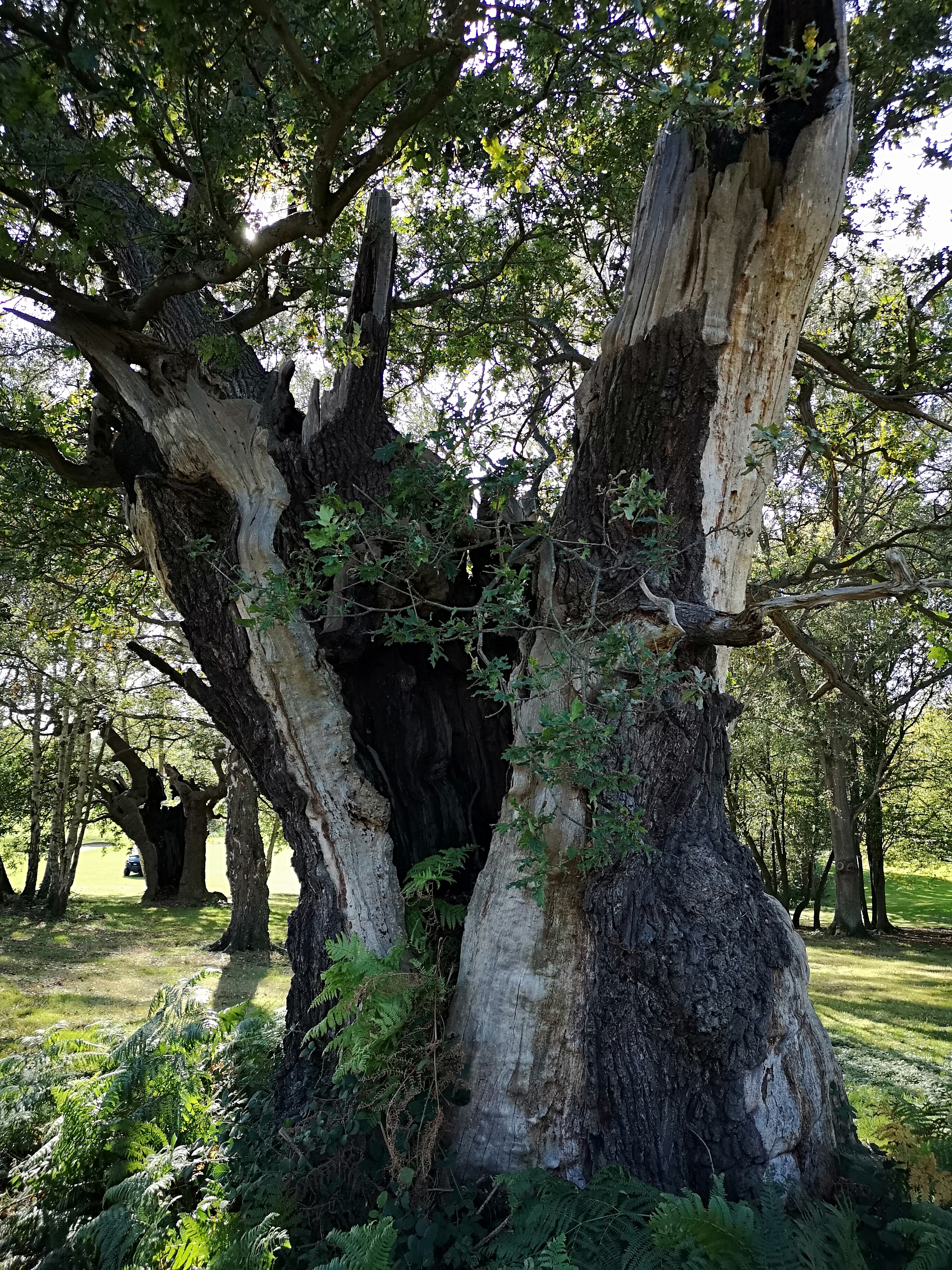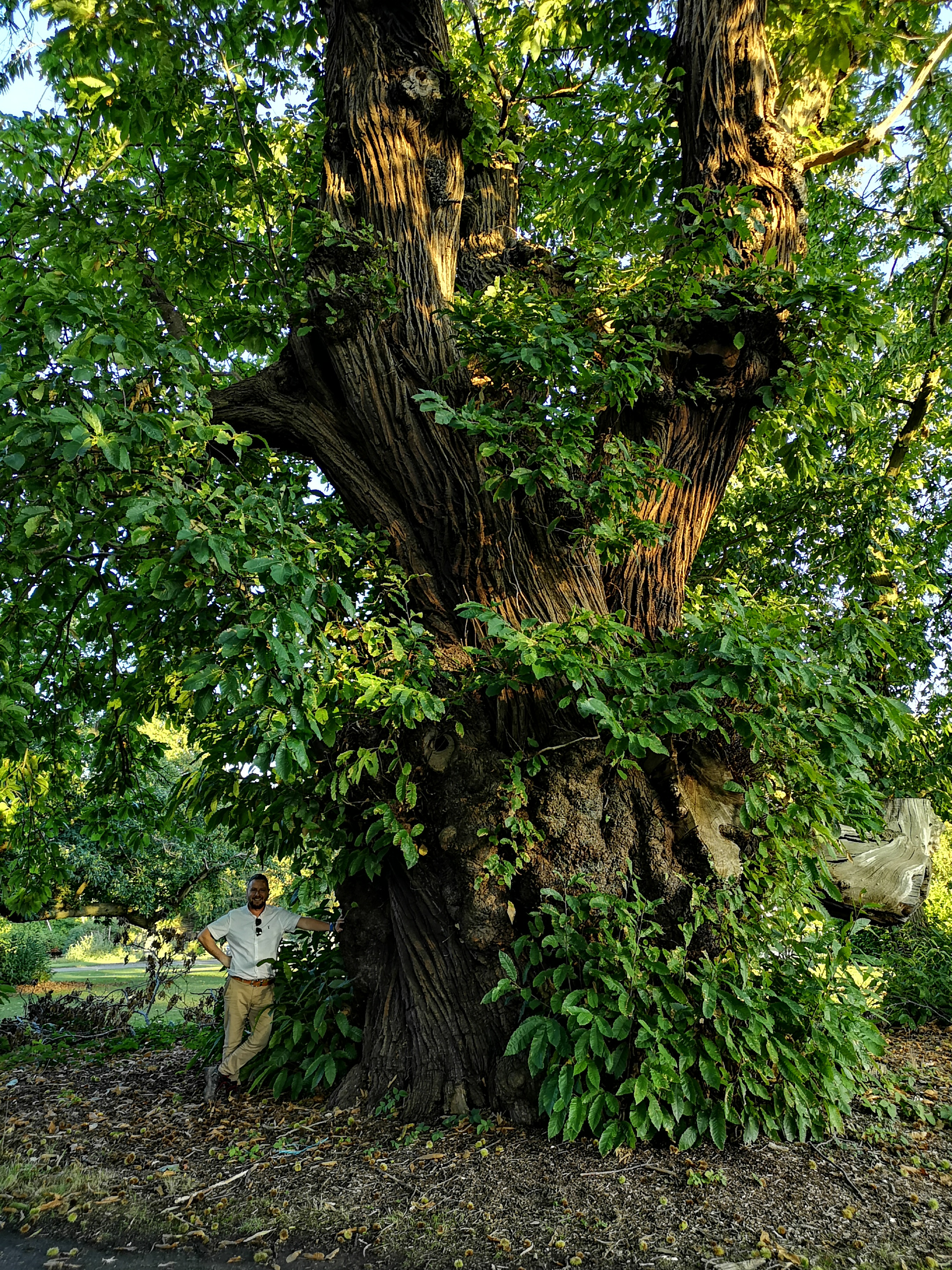Guest Blog | The Special Ancient Trees of UK Golf Courses
07/04/2020
Author James Hutchinson | Membership Services Manager for Sustainability and Ecology - British and International Golf Greenkeepers Association’s (BIGGA).
As a golf course environmental manager, I see the good and bad management practices that go on throughout the UK’s 2,600 courses. I will however, suggest at this point that bad ecological management is almost a thing of the past, and, if you’re looking for wildlife, then your local golf course is likely to have more than the majority of its surrounding environs (mono-culture farmland, housing, industry etc…).
One of the habitats that we have a good amount of is veteran and ancient trees – I visit about 100 parkland courses per year and I am quite happy to report that most have an “oldie” growing contently onsite. A good example to start with is the ‘Leper Oak’ at Hexham GC, Northumberland, so called as there used to be a monastery nearby; the monks left food underneath the boughs for the adjacent leper colony, hence the name of the tree.

The "Leper Oak": This beautiful old oak is full of decaying timber, moss, lichens, liverworts and as a result, many different types of fauna can be found either feeding or nesting in the cracks and fissures.
As most of the trunk has long hollowed (meaning it is not possible to take a core and count the rings, or for Carbon-14 samples), and the fact that it is almost impossible to now measure the true girth, who knows how old the tree is? What’s left is approximately 8 meters at the waist suggesting upwards of 700 years old. Quite the mystery which only adds to the majesty of the tree.
The Hertfordshire Golf Course, Broxbourne
Another example, or collection of examples, can be found at The Hertfordshire golf course, Broxbourne. Sweet chestnuts to 10 meters in girth can be found, along with gnarly oaks and yews. The centrepiece of this special course is the chestnut, which can be found adjacent to the clubhouse, but it’s the numerous decaying old oaks which really catch the eye of a tree-enthusiast like me. Similar to the Leper Oak, the centres have long since departed, possibly by lightning strikes and other such trauma’s, but it is the cork cambium (layers of bark) which have begun to regrow that impresses me the most with cases like The Hertfordshire - I think it’ll be another century before they eventually join up to create a hollow cylinder though. Nevertheless, the habitats in these trees are truly impressive.

An impressive oak found at The Hertfordshire Golf Course

Another stunning tree; a sweet chestnut found at The Hertfordshire Golf Course

An example of a coronet cut to imitate the natural decay process.
Stoneleigh Golf Course
In terms of management, greenkeepers tend to leave these trees to their own devices rather than to tidy them up. On occasion, some must have very light pruning for health and safety reasons, which is exactly what Stoneleigh Golf Course has done. The majority of their 7 - 9 metre oaks are ‘in play” therefore greenkeeping tasks, golf traffic and general foot traffic pass beneath the limbs daily. The team ‘coronet cut’ the dead timber to make it look like the natural decaying process, or to look like the limb has simply snapped off.
Stoneleigh, and all the other courses that have veterans and ancients, aerate the turf beneath via a number of methods including hollow tinning, spiking and air injection – this gives both the grass and the tree the ability to breath and as such adds longevity to all involved. It was realised that, when the ill looking Turner’s Oak at Kew Gardens was blown from its foundations in the storm of 1987, and then fell back in again, all that was needed for the tree was air – foot traffic created compaction around the base thus the poor tree had respiratory issues. Aeration is something we have practiced since the dawn of greenkeeping and probably saved these beautiful old golf course trees from demise.

A series of ancient oaks provide a beautiful setting for golfers at Stoneleigh Golf Course
Willesley Park Golf Course, Ashby de la Zouch
Finally, Willesley Park Golf Course in Ashby de la Zouch made me aware of a tree that was so large and knobbly that I knew I had to visit it with my tape measure! I have seen hundreds of 5, 6 and 7 metre girthed trees on golf courses including a 10-meter oak, but none prepared me for the sight I encountered at Willesley.
After fighting through brambles, scrub and small pioneer birch, the greenkeeper’s and I were faced with a sweet chestnut so magnificent it took my breath away – I blamed the fighting through scrub, but they didn’t believe me. NOTE: It was decided that the tree should be seen rather than hidden away so the small birch around the base have been removed. Also, the tree was beginning to lose the all-important sunlight to the upper canopy, which wasn’t very high given the now stunted growth of the tree. To cut a long story short, we measured 11.5 metres at approximately one metre up suggesting maybe a millennium old. There are probably older chestnuts here in the UK, but I am yet to hug one as gnarly, warty and downright appealing as this golf course beauty.

A monumental sweet chestnut, found at Willesley Park Golf Course in Ashby de la Zouch. ATI number 166313.
With special thanks to James for taking the time to share such stunning examples of ancient trees that can be found on UK golf courses - ATI Admin.
